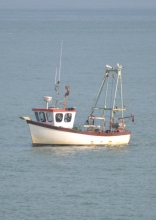
The Belgian monitoring programme for recreational sea fisheries- for the first time provides scientifically substantiated data on this until recently unknown sector. The programme includes intensive field surveys and a unique large-scale collaboration with the recreational sea fishing community. The complex and integrated processing methods are a dynamic element and will be optimised on a continuous basis where necessary. The unique Belgian situation in terms of coastline dimensions (67 km) creates an excellent opportunity for a broad area-wide presence of researchers in the field of recreational sea fishermen, which makes it possible to test the results obtained against reality. In this way, it can be concluded that, although the current analysis methods are not cut in stone, these first results provide a reliable picture of the recreational sea fisheries sector in terms of use of space, the ecological impact and the socioeconomic dimension.
The results provide a unique view on the use of space by the recreational sea fisheries sector on Belgian territory, an important fact for the policy makers and stakeholders involved in the marine spatial planning process and integrated coastal management. The catch results indicate a total recreational supply of marine products in 2018 of 271 tonnes, of which 102 tonnes of grey shrimp. Apart from the latter, the main target species are whiting, dab, sole, cod and mackerel. Recreational landings represent 3.7% of the total (commercial + recreational) landings from the Belgian part of the North Sea. The shares in the top 3 species for commercial fishing, i.e. sole, plaice and grey shrimp, are 1%, <1% and 7% respectively.
The recreational fishery in the Belgian part of the North Sea is mainly focused on personal consumption and only to a limited extent (sea bass) on catch & release. In foreign waters (mainly Norway with a focus on cod), however, the catch & release principle is frequently applied.
The order of magnitude of the recreational sea fishing community is estimated at 2,900 individuals, two-thirds of whom are from West Flanders with an average age of about 56 years. The direct expenditure of the sector is estimated at a minimum of 8.6 million euros on an annual basis. The not insignificant indirect and induced economic values have not yet been mapped out.
The current programme is part of the Programme of Measures of the Marine Strategy Framework Directive (FPS Environment, Marine Environment Service) and, in addition to the latter, is also financially supported by the National Data Collection Programme (Flanders), the Province of West Flanders and the VLIZ. This provides the unique opportunity to map recreational fish catches over a period of several years and in this way to detect possible trends. In the coming years we will continue to work towards this. The aim is also to obtain better insights into the catches generated within the context of competitions in the future. In addition to the catch-related data collection, further mapping of the economic added value (direct and indirect) of the sector will continue to be a point of attention.
For the full report (Dutch), click here